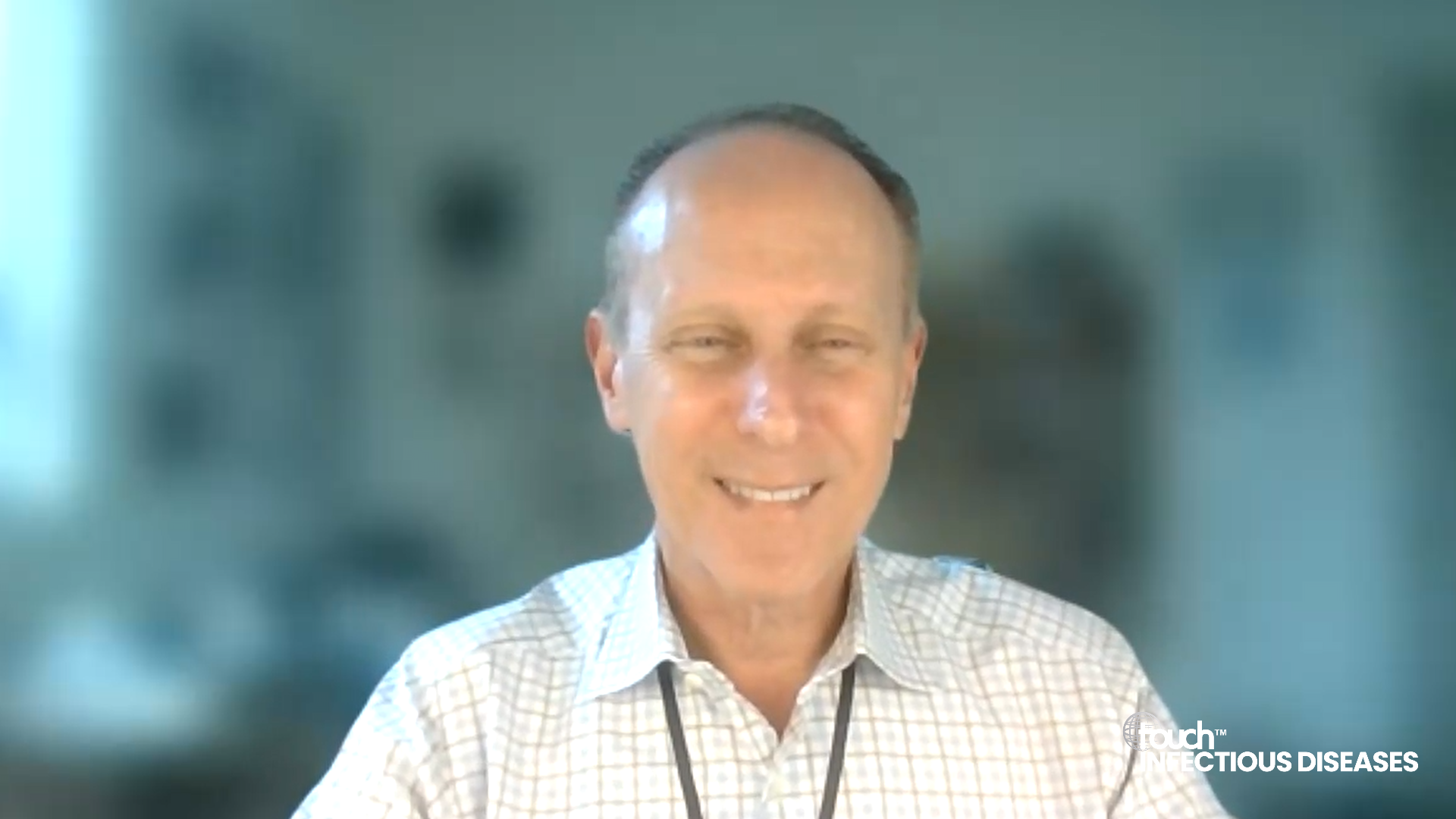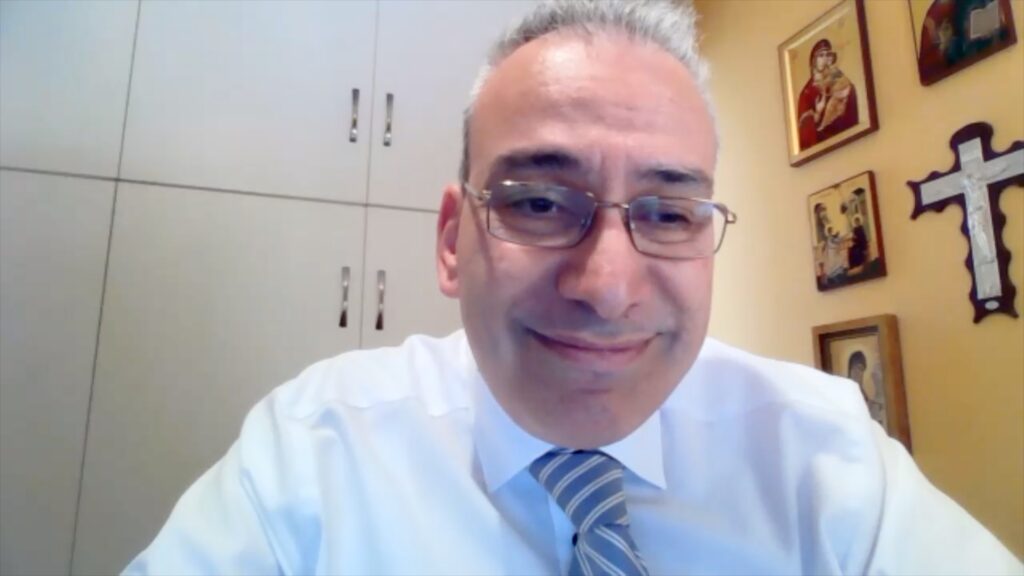TouchINFECTIOUS DISEASES coverage of data presented at ADA 2024:
Antiretroviral therapy (ART) effectively manages HIV by suppressing viral replication. ART lowers viral load, boosts CD4 cell count, and reduces the risk of transmission. It is essential for healthcare providers to stay updated on ART guidelines, recent data and advancements. Antiretroviral therapy updates from the Conference of Retroviruses and Opportunistic Infections (CROI) 2024 are reported here by Dr Eric Daar, Division of HIV Medicine, Harbor-UCLA Medical Center, Atlanta, GA, USA.
Dr Daar begins by discussing the CARES study, an ongoing phase 3b trial evaluating a switch from oral to long-acting injectable (LAI) therapy for HIV-1, showing long acting therapy was effective, safe and more favourable and may be considered for use in treatment programs in sub-Saharan Africa. He also highlights the phase 2 IMPAACT 2017 (MOCHA) study, a single arm looking at long-acting (LA) regimens in a single arm study in adolescents, demonstrating that LA therapy was also highly effective and well received.
The discussion then focused on the ACTG A5359, LATITUDE phase 3 trial, which compared long-acting injectable (LAI) cabotegravir/rilpivirine versus oral standard-of-care ARTin people living with HIV in the USA who had a history of suboptimal adherence. The trial demonstrated that LAI cabotegravir/rilpivirine was more efficacious than the daily oral regimen in participants facing adherence challenges
A retrospective study of the WARD-86 study was then discussed. The study evaluated people living with HIV who started LAI-cabotegravir/rilpivirine focusing on the durability of viral suppression in this population. In those initiating LAI-cabotegravir/rilpivirine without viral suppression, 24-week viral suppression estimates were at least 85%, showing LAI ART can be an important tool for improving viral suppression among patients who face adherence challenges to oral ART.
Dr Daar also highlighted how these studies tie into the ISA-USA guideline amendments that took place shortly before the CROI 2024 meeting, suggesting that if you can provide intensive follow-up for these individuals, you could consider treatment with intensive wraparound services if they are unable to take oral medication. This led Dr Daar to think about the future, highlighting a phase 2 study showing that 94% of people who switched to weekly islatravir and lenacapavir maintained an undetectable viral load, matching the viral suppression rate of those who stayed on daily bictegravir/tenofovir alafenamide/emtricitabine.
Disclosures: Eric Daar is a consultant for Gilead, Theratechnologies, and ViiV Healthcare, and receives grant/research support from Gilead and ViiV Healthcare.
This content has been developed independently by Touch Medical Media for touchINFECTIOUSDISEASES and is not affiliated with the Conference of Retroviruses and Opportunistic Infections (CROI). Unapproved products or unapproved uses of approved products may be discussed by the faculty; these situations may reflect the approval status in one or more jurisdictions. No endorsement of unapproved products or unapproved uses is either made or implied by mention of these products or uses by Touch Medical Media or any sponsor. Views expressed are the speaker’s own and do not necessarily reflect the views of Touch Medical Media.
Associated abstracts:
Kityo CM, et al. Randomized Trial of Cabotegravir and Rilpivirine Long-Acting in Africa (CARES): Week 48 Results. Conference of Retroviruses and Opportunistic Infections. 2024. Abstract 122.
Rana AI, et al. Long-Acting Injectable CAB/RPV Is Superior to Oral ART in PWH With Adherence Challenges: ACTG A5359. Conference of Retroviruses and Opportunistic Infections 2024. Abstract 212.
Hickey M, et al. 24-Week Viral Suppression in Patients Starting Long-Acting CAB/RPV Without HIV Viral Suppression. Conference of Retroviruses and Opportunistic Infections. 2024. Abstract 628.
Gaur et al. Long-acting Cabotegravir Plus Rilpivirine in Adolescents with HIV: Week 24 IMPAACT 2017 (MOCHA) Study. Conference on Retroviruses and Opportunistic Infections. 2024. Abstract 188.
ISA-USA. Antiretroviral Drugs for Treatment and Prevention of HIV Infection in Adults: 2022 Recommendations of the International Antiviral Society–USA Panel. 2022. Available here: https://www.iasusa.org/resources/guidelines/
Colson A, et al. Efficacy and Safety of Weekly Islatravir Plus Lenacapavir in PWH at 24 Weeks: A Phase II Study. Conference of Retroviruses and Opportunistic Infections. 2024. Abstract 628.
Transcript:
I’m Eric Daar, the chief of the division of HIV Medicine at Arbor UCLA and Professor Medicine at the Gaffin School of Medicine and UCLA.
What were the advancements in antiretroviral therapy discussed at CROI 2024, and how do they improve upon existing treatment options?
I think perhaps one of the highlights in the area that’s gotten the most attention of late in antiretroviral therapy is related long acting treatment. We’re sort of at long acting treatment version 1.0 with the long acting cabotegravir and rilpivirine, which are now approved in many parts of the world for people who are virologically suppressed with no history of virologic failure and provides this really unique opportunity for people who are looking to move away perhaps from daily pill options. It’s not for everybody. But generally well tolerated in the people who want the option of once a month or every two month injections, people have been really pleased with the outcomes, and I think what was new at this meeting with regards to that long acting option came the data from sub-Saharan Africa. Right now, this has primarily been used in resourced countries, and there are concerns about people in resource limited settings, coming in, getting the injections in a clinical setting every four to eight weeks.
CARES Study – Randomized Trial of Cabotegravir and Rilpivirine Long-Acting in Africa (CARES): Week 48 Results
So this was a really important study called the CARES study where they used a public health policy, and they took people who are stably suppressed on antiretroviral therapy, with no history of virologic failure, and they offered them the opportunity to be in a study where they either received their current regimen or switched to the long acting therapy. And they demonstrated in a large study that there were very high rates of maintained virologic suppression. Much like the kind of data that’s been seen in Western Europe and the United States. In addition, for those who wanted to be on a long acting therapy, it was found to be quite acceptable. There were a few other really important lessons learned in this trial.
These were people without a history of virologic failure, but they did have stored samples saved so that they could look for, so called archived resistance, and the peripheral blood mononuclear cells, and they found it in about ten to fifteen percent of people, including to the integrase inhibitors and NRTIs, and despite that, they saw high levels of resistance, which in my mind suggests probably we don’t really know how to interpret these archived assays. The other thing they had was a large percentage of people who had this subtype A1, and some of the early data suggested people with subtype A1 and A6 had poor virologic responses to this regimen. At least with A1, that was clearly not the case. This may be an A6 problem, but not an a one problem. So that was great news, further supporting the use of this regimen.
Phase 2 IMPAACT 2017 (MOCHA) study
Other data that came out of this meeting using these long acting regimens included a single arm study in adolescents, that showed that it also was highly effective and well received. Then finally, tried to look at a population of people that weren’t included in the original trials. The original trials included people who were really prestine as far as the adherence with their oral antiretroviral therapy and were anxious to be in a long acting regimen.
LATITUDE trial: Long-Acting Injectable CAB/RPV Is Superior to Oral ART in PWH With Adherence Challenges: ACTG A5359
There was a study through the AIDS clinical trial group called the LATITUDE trial that looked at people who were poorly adherent with oral therapy and not suppressed. And what they did was they provided a financial incentive for these people to suppress their virus. And if they did, then they offered them to be randomized either to stay on that regimen for about a year or switch to the long acting regimen. We’d prior to this, had no real good data. Showing that you can take people who are not really adhered with their therapy, at least their oral therapy, and suppress them. In the data safety monitoring board stop the study prematurely because of some key secondary endpoints showing lower rates of virologic failure, and those who took long acting therapy then stayed on their oral therapy. So this was a major advance because we have not to date seen any data or thought about the possibility of realistically using these regimens, and people were not adhering to therapy.
WARD-86: 24-week Viral Suppression in Patients Starting Long-Acting CAB/RPV Without HIV Viral Suppression
Then we’ve got follow-up data as sort of a continuation of the same theme from the WARD-86 study. The San Francisco general experience where they treated homeless people, about 55 of whom were viremic, unable to take their oral medications, and they put them on long acting therapy. And they had previously presented some early data showing it looked very promising. Here, they showed data with about 48 weeks of follow-up for these 50 plus people who were. So again, completely different than the original trials, even different than the LATITUDE trial, which did get them suppressed before they switched them And they were able to show out these viremic people that a very high number of people were able to achieve virologic suppression.
IAS-USA guidelines amendment
And this is what many people think might be sort of the next really effective area for these high risk individuals. In fact, just shortly before the meeting, the ISA Society-USA, who come out with guidelines every two years, put out an amendment to their most recent guidelines from about a year and a half ago suggesting that perhaps if you can provide intensive follow-up for these people that you could consider treating people with that intensive wraparound services If they’re unable to take oral medication, and there are lots of reasons why that happens, we all have these people in our clinic. They have low CD4s or history of AIDS who are at really high risk for progression. They suggested in their guidelines, but that’s a setting where you might use that WARD 86 approach. It’s not in other guidelines, at least not yet. But I think this represents sort of a major advance and step forward first long acting therapy version 2. If we think about the next steps, for long acting therapy. Obviously, we would all love to see every six month therapy, and, you know, there’s some work in that area. But perhaps sooner than that,
Efficacy and Safety of Weekly Islatravir Plus Lenacapavir in PWH at 24 Weeks
We also saw some early data from a phase two trial using a novel nucleoside reverse transcriptase translocation inhibitor called islatravir. It’s been in development for a long time. Very potent can be given at a low dose and has a long half life. And they gave it with lenacapavir. Most people are familiar with lenacapavir approved as a every six month subcutaneous injection for people who are highly treatment experience with multi drug resistant virus, but it turns out lenacapavir also has a long half life and can be given orally once a week.
So this was a phase two switch study where they took people suppressed, and they randomly assigned them to stay on their stable oral regimen switch them to this islatravir, not yet approved investigational agent, and lenacapavir orally, again, not yet approved, investigational agent as an oral drug, and they gave it to them once a week and showed at least early on that they were able to maintain virologic suppression. And we also heard about a couple of other drugs that have the potential to be given weekly. So perhaps version 2.0 won’t be every six month dosing, but perhaps it will be something as simple as one little pill once a week to maintain virologic suppression.
Interviewer/Editor: Katey Gabrysch
Cite: Daar E. Antiretroviral therapy updates at CROI 2024: emerging treatment strategies in HIV. touchINFECTIOUSDISEASES, March 19 2024.











